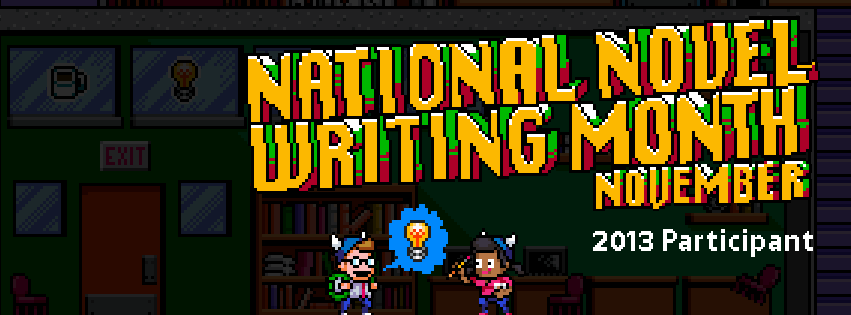
As you most likely already know, I decided to participate in NaNoWriMo this year. Although it is my fourth year participating, the entire experience feels different from previous years. First, I was completely unprepared this time, no characters, no plot, nothing but a setting in mind. Second, I have absolutely no notes on this newest novel, not a one. Third, I’m trying something new with POV. Fourth and most exciting, I have NaNo friends!
I’ve stated in the past that my first go at NaNo found me floundering for a novel idea until the very night before. But once the idea struck, I had everything I needed; characters, plot, conflict, etc… I scribbled it all down like a mad genius and went to be satisfied that I now had a solid foundation to build on. When I woke up the next morning, more than 2k words poured out of me and I was off to a great start.
 |
| A picture is worth a thousand words so 50 should help me reach my goal. Image courtesy of Jetkasettakorn / FreeDigitalPhotos.net |
This year however, the only thing I had to work with was the idea that I wanted to write a horror story, potentially dealing with a young couple moving into a haunted house. But I had no idea who the couple was, what they looked like, why they were moving into the house or why the house was haunted. Then another participant mentioned using photo prompts to help them create 30 short stories in 30 days and I thought, photo prompts, that’s exactly what I need. So I headed to Pinterest to create a board dedicated to my NaNoWriMo novel. With each picture I found, the story began to take shape, morphing and evolving along the way. While in its current state it is still a story about a haunting, it is no longer the story that I first thought up a little over a week ago. For the first time, I can truly say that I am writing by the seat of my pants.
In the past, I have had notebooks or Scrivener projects chock full of notes, character sketches and conversations that I’ve wanted to include in the novel. I would use these to help keep me on track. One year, I even attempted to do an actual outline in hopes that it would guide me on what to write next, keeping the words flowing freely.
 |
| Swapped notes for photos Image courtesy of pixbox77 / FreeDigitalPhotos.net |
This year, the closest thing I have to notes are my photo prompts. I have no character sketches and no real idea of how the story will end. Somehow, the story seems to be writing itself this time around. I just set my fingers on the keyboard and they do the rest. There is no over-thinking, no second guessing and no constant need to edit this time around. I even noted inconsistencies with POV and tense and just kept going with the knowledge that it would get fixed during the initial edit. And if it gets missed in the first edit, there is always the second or the third or however many it takes to get it ready to share with the world. This is a huge step for me. When I first started writing, noticing something like that would have caused me to obsess, feeling the need to fix it right then and there, setting me back on my word count and making me lose the momentum that I had built up.
I always prefer to write in the first person, present tense. I know a lot of authors and even readers find this approach a bit odd, some even calling it unnatural. But to me, this is what feels right. The main character drives the story, explaining what is happening along the way, taking us on a journey. This time around, I am still using the first person, present tense, but instead of one main character telling the story, there are two. The novel is being split into parts; the first telling the story over a span of six months, from one character’s POV, the second telling it from the other character’s POV over the same six month period and the third part will give us the outcome (not sure how the POV will be worked in this part). I’ve never written a story from two different POVs, nor have I ever written one with parts. I’m not sure if the final product will still be structured this way or if I will find some way to merge the first two parts and just do a normal chapter book. Only time (and maybe beta readers) will tell.
And for the most exciting change in this year’s NaNoWriMo participation, I have other people that understand what it is to take on this beast that is NaNoWriMo. In the past, I have always done this on my own and half way through, I would just start to fizzle out. I’m hoping that this year, seeing all of my fellow participants soldier on, will be a motivating factor for me not to give up. And when I feel my conviction start to waiver, I have people that I can turn to, who have been there and done that, to give me the metaphorical swift kick in the pants that I will need to keep going.
 |
| This time I’m not alone Image courtesy of Ambro / FreeDigitalPhotos.net |
So far, I am doing great, writing an average of about 1,700 words a day. To find out what the novel is about and read an excerpt, click here.



